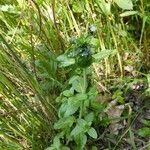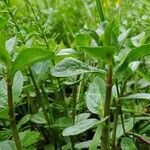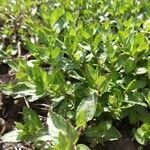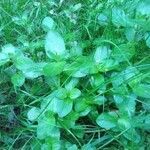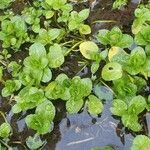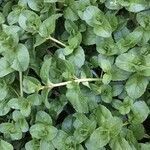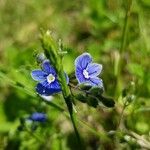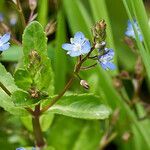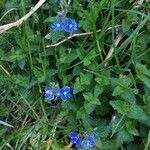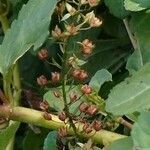Much like no. 15 [Veronica americana (Raf.) Schwein]; lvs more elliptic or obovate, 2–6 cm, broadest near or above the middle, usually broadly rounded above, obtuse to rounded at base, crenate; fls 5–7 mm wide; fr turgid, 3–4 mm wide, not notched; style 1.8–2.2 mm; 2n=18, 36. Native of Eurasia, sparingly established on muddy shores and streambanks from Que. to Mich., s. to N.J. and W.Va. Summer.
A herb. It has creeping hollow stems. It often grows half under water. It can be 30 cm high. The leaves have stalks. The leaves are 3-5 cm long and oval. They are glossy. The flowers are blue. A few flowers occur together in clusters in the axils of leaves.
A soft-stemmed herb, ascending up to 1 ft. high
Flowers blue
